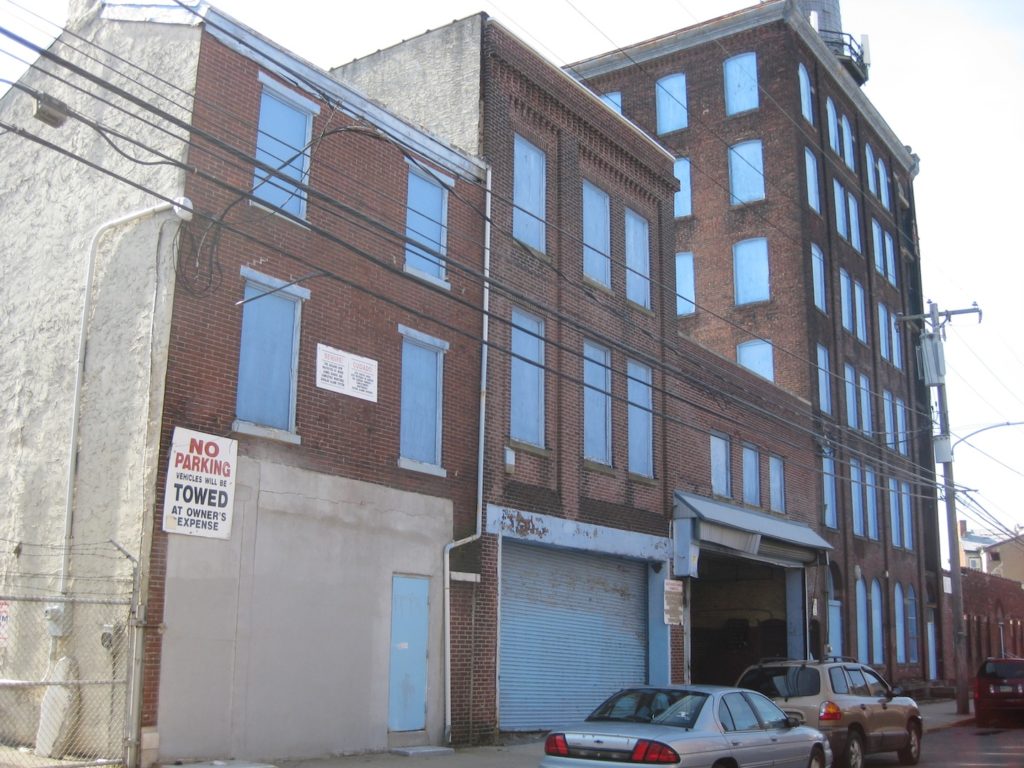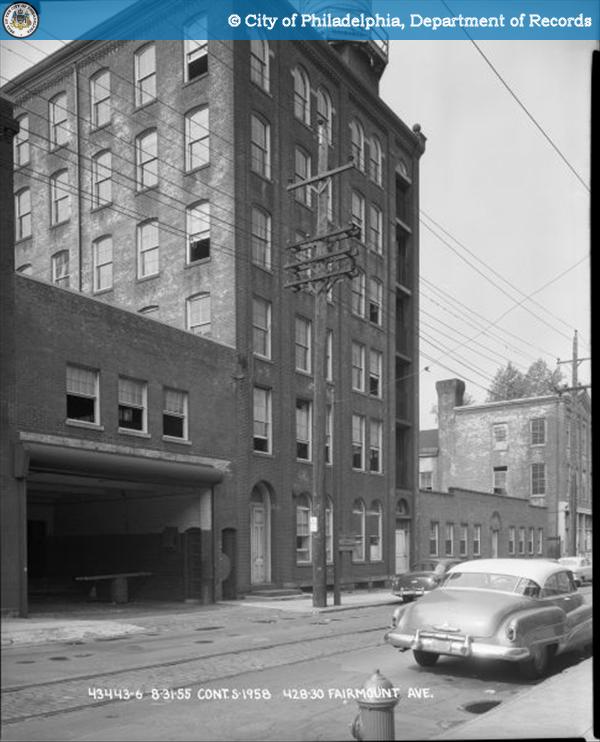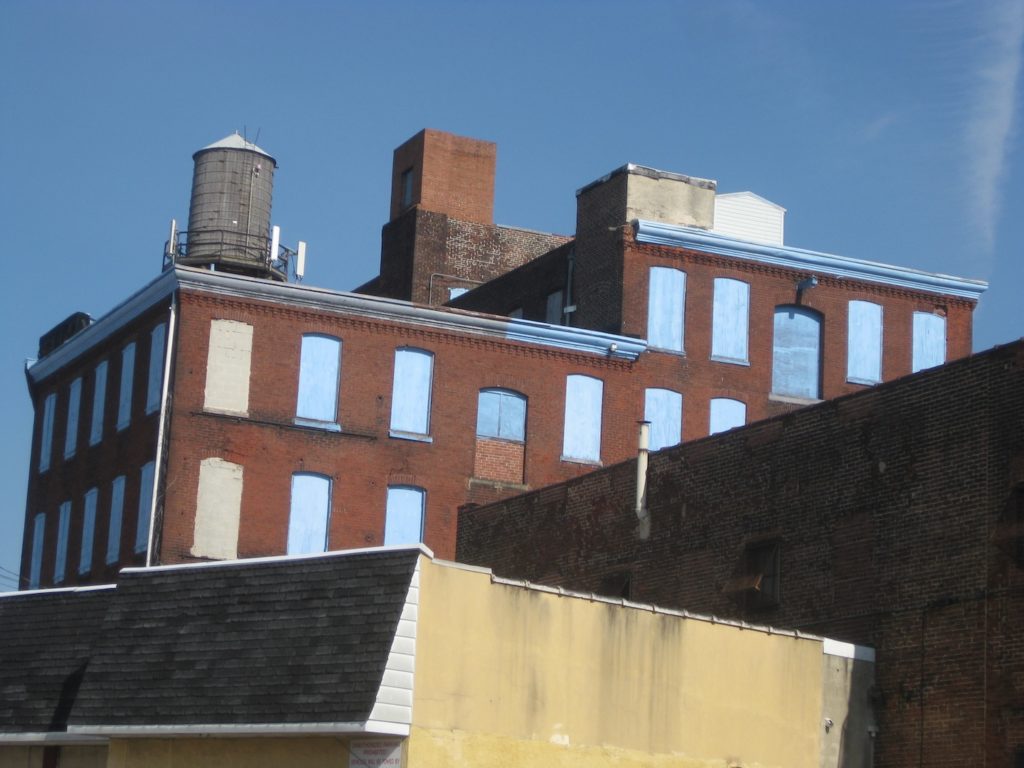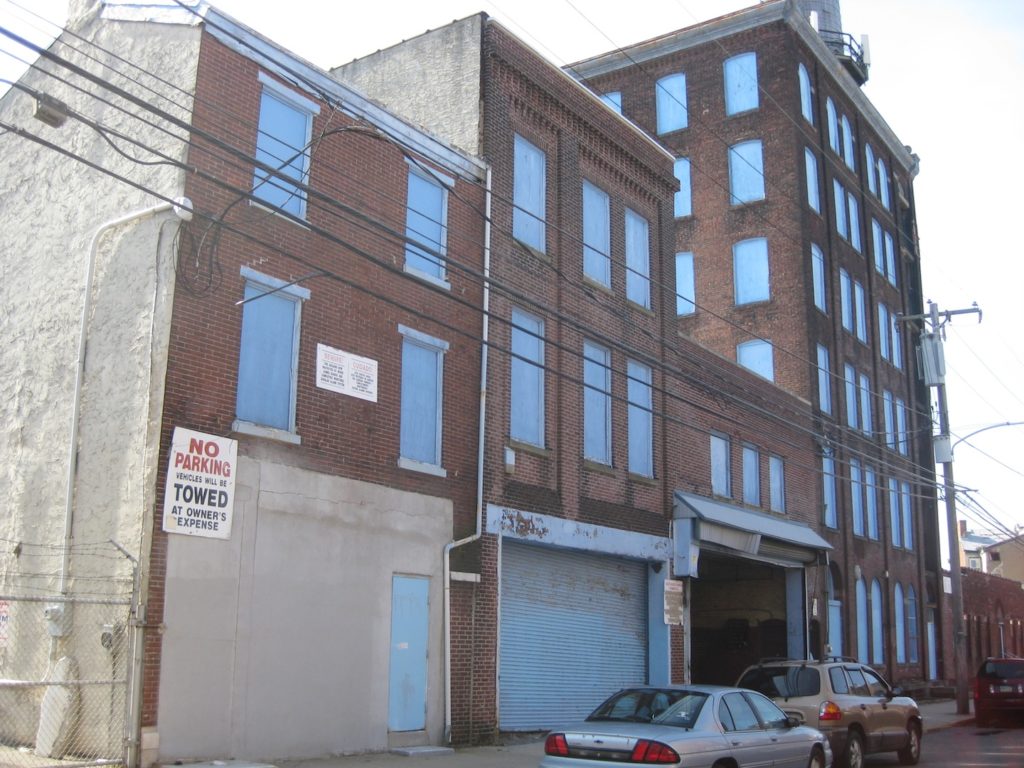Two winters ago, we wondered about 420-42 Fairmount Ave., a large and unsightly warehouse that was home to a company called Trans-Atlantic. Passing by the building, you may think it’s vacant, especially considering all its windows are boarded up with blue-painted plywood. Despite the fact that the property is very much in use, it still screams adaptive reuse, especially considering the widespread development nearby. Now, it appears those hoots have been heard as developers have presented early plans to convert the warehouse into 48 apartments, demolish the smaller adjacent buildings, and parlay that with the construction of 25 single-family homes.

The Northern Liberties Neighbors Association asked developers to come back another time, and made a number of suggestions about how to reduce the impact of the large-scale project on current neighbors. Developers planned to demolish the smaller buildings as well as the United Refrigeration building on 5th Street included in the parcel, but the NLNA suggested an adaptive reuse of those buildings, for something like artist studios. The taller buildings slated to be reserved were earmarked for 5 studios, 33 one-bedroom, and 9 two-bedroom apartments. Neighbors and the NLNA raised concerns about the 37 parking spots for 73 total units, of which 15 would be dedicated to private use for the townhomes.

Another issue was retail. This parcel here stretches along both Fairmont and Wallace, so it makes sense that the NLNA would want to see some commercial elements. In this case, the NLNA asked developers to return with more developed drawings that reflected non-residential use on first-floor of the older buildings, as well as adjusted height on the townhomes, now spotted for 44'.

So it looks like this may be another few month process involving the NLNA and developers seeking to develop a large-scale project that will impact the neighborhood in the years to come. It’s a good thing if you ask us- a project this size needs to include a significant collaboration between the developers, the near neighbors, and the group tasked with creating a vision for the neighborhood. We'll be interesting to see how the project evolves as it works its way through the neighborhood process.


Leave a Reply